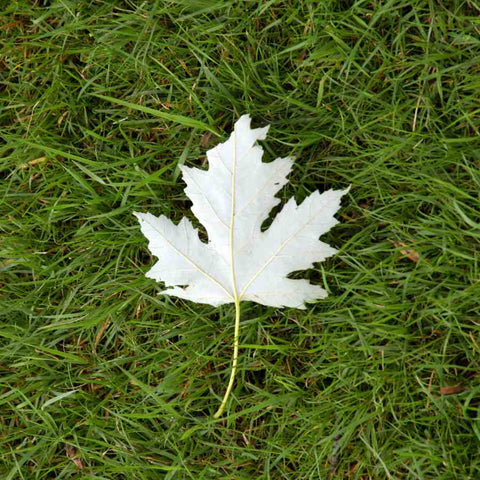Sycamore Tree Facts and Information
- Latin Name: Acer pseudoplatanus
- Native Words: Old Irish () Scots Gaelic () Old English () Welsh (marsanwydd) eastern Celtic ()
- Ogham Sign: n/a
- Height when Mature: 35m
- Height after 10 years:

Sycamore Tree Botanical Description:
There is an ongoing dispute as to whether Sycamore is a native British tree, but is now by far our commonest species of maple. The seed is extremely fertile and not restricted in where it will germinate; everywhere from ancient woodlands to slag heaps. The seedlings appear in May with two green wings which resemble the winged seeds which spiral down like helicopter blades in autumn. Then two round leaves develop before the full versions arrive.
These full leaves are five pointed and large, palmate in appearance, and borne on red stalks. While the main stem on young sycamores is coffee brown that on mature trees is dirty green, often stained with dusty green algae. The leaf buds are fat and green, (borne in opposite pairs) and the flower buds are pink, opening to tassels of hanging flowers in May.
The leaves often become sticky with secretion produced by aphids and a rain of this substance will fall in a sycamore wood covering everything (including walkers!) The bark often flakes off on mature trees. Sycamore produces large numbers of seed pods every year which spin off the tree in great numbers and the wind carries them quite a way, encouraging a rapid spread of the species.
Sycamore Natural History and Ancient Wisdom of Sycamore Trees:
There is an ongoing dispute as to whether Sycamore is a native British tree, but is now by far our commonest species of maple. The seed is extremely fertile and not restricted in where it will germinate; everywhere from ancient woodlands to slag heaps. The seedlings appear in May with two green wings which resemble the winged seeds which spiral down like helicopter blades in autumn. Then two round leaves develop before the full versions arrive.
These full leaves are five-pointed and large, palmate in appearance, and borne on red stalks. While the main stem on young sycamores is coffee brown that on mature trees is dirty green, often stained with dusty green algae. The leaf buds are fat and green, (borne in opposite pairs) and the flower buds are pink, opening to tassels of hanging flowers in May. The leaves often become sticky with a secretion produced by aphids and rain of this substance will fall in a sycamore wood covering everything (including walkers!)
The bark often flakes off on mature trees. Sycamore produces large numbers of seed pods every year which spin off the tree in great numbers and the wind carries them quite a way, encouraging a rapid spread of the species. Key distinguishing feature: fat green leaf buds in late winter Already attested to in the 16th century, Sycamore now grows from the south coast of England to northern Scotland.
Many woods are now invaded by Sycamore, which will grow vigorously in shade and reaches maturity very quickly, so woods rapidly become a monoculture of sycamore. It was thought that Sycamore was brought over to Britain in the 16th century for landowners who were looking for a rapidly growing tree which could be used to give grandeur to their estates. However, recent research suggests that Sycamore was common up to Roman times but died out due to a warming climate except in mountainous areas such as Scotland. The northernmost wood in Britain is on the Mey Estate, Caithness, Scotland. Nowadays, as it burns well, it is used for charcoal as part of woodland management.
The wood is excellent for carving and as general furniture timber for bookcases etc It was used to make rollers in textile mills. In Scotland ladles for kail were scooped out of Sycamore wood. On the Orkneys, spoons were carved from Sycamore.
Sycamore Place Names:
There are no known place names associated with Sycamore trees, although maple place names may refer to the tree.
Sycamore Trees Wildlife Rating:
The aphid bloom which occurs on sycamores attracts small birds moving in the canopy such as blue tits.
As many lichens develop on Sycamore as on Oak.
The abundant leaf litter attracts many worms and rich humus develops. However, it rapidly dominates a wood excludes other trees, reducing biodiversity.
Sycamore Trees Good Points / Bad Points:
Sycamore is susceptible to Sooty Bark Disease and Diamond Bark Disease Canker in dry warm weather, as well as a condition called Tar Spot which leaves black marks on the leaves.
Seeds everywhere! Nevertheless, it is fairly robust and can usually be relied on to reach maturity.
Want to buy a Sycamore Tree?
We specialise in sending unique trees as gifts, and while we don't currently offer sycamore saplings we do have other varieties that are perfect for many occasions. Something with a similar stature to a Sycamore is our Oak Tree Gift, it's steeped in ancient mythology and is popular within our Tree Gift Packs range.